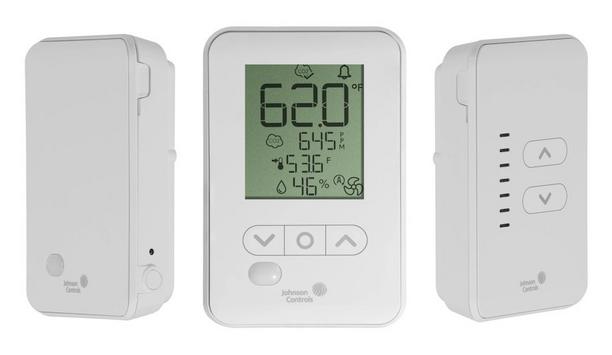The education field was faced with multiple challenges this past year. Not only did the COVID-19 pandemic bring the necessity of online learning, but it has also brought up necessary changes to physical schools and universities, when reopening time arrives. The health and safety of students, staff, and faculty has become a priority for directors of school operations, who have been working to properly adapt school facilities to this new reality we are facing.
Ensuring health and safety of students
Besides safety measures like the addition of hand sanitizers, reinforcing the use of masks and social distancing, these professionals were faced with an even bigger and more important issue: ventilation and airflow indoors.
School facilities have many unique features that increase the concerns regarding indoor air quality. Occupants are usually very close together, considering that school buildings have four times as many occupants as office buildings for the same amount of floor space (EPA).
Variety of pollutant sources
According to the WHO, the virus can also spread in poorly ventilated and/or crowded indoor settings
Other issues include tight budgets, the presence of a variety of pollutant sources (including specialty classrooms, like art, gyms, and labs), concentrated diesel exhaust exposure due to school buses in the property, and a large amount of heating and ventilation systems that may cause an added strain on maintenance staff. On top of that, schools usually have to worry about child safety issues, concerned parents, and wellbeing of faculty and staff.
According to the World Health Organization (WHO), the virus can also spread in poorly ventilated and/or crowded indoor settings, where people tend to spend longer periods of time and aerosols particles tend to be suspended in the air, which leads to the importance of indoor air quality in classrooms.
Importance of natural ventilation and HVAC systems
Natural ventilation and HVAC systems are the basic methods to bring clean air indoors, however, schools that rely only on these methods of ventilation need to be aware of their potential limitations.
HVAC systems, for example, should have regular maintenance checks and filter changes, in cases where the system is less sophisticated, schools need to add new forms of air purification to effectively mitigate airborne pathogens.
Studies showing quality of air in US schools
Studies have shown that low-standards HVAC ventilation systems may contribute to airborne diseases transmission due to low air exchanges rates, poor maintenance and lack of high-efficiency filters. For this reason, portable air cleaners are becoming more and more popular to create a healthy learning environment.
EnviroKlenz, an indoor air quality company, conducted real-life setting studies to show the quality of the air in schools in different areas of the United States. The study measured the amount of particulate matter in classrooms, with and without the use of additional portable filtration systems, which allowed for comparison and analysis of the benefits a portable air cleaner can provide.
National EPA standards for indoor particulate matter
The study also compared the current data to the national EPA standards for indoor particulate matter (PM), in order to evaluate the performance of the EnviroKlenz Air System Plus.
The IAQ meters focused on PM1, which is about 1 micrometer in size (70 times smaller than the diameter of human hair!). The systems ran in operational educational environments, with daily schedules being carried out as usual and results can be seen below.
 |
School directors of operations also must pay attention to the different technologies available in portable air cleaners. With the growth of the industry, new emerging technologies have come up, and there’s still lack of third-party testing to prove their efficacy. Other technologies, like carbon filters, do not work against airborne pathogens and may release harmful byproducts back into the environment.
EnviroKlenz Air System Plus
EnviroKlenz Air System Plus, which utilizes a patented earth mineral technology to capture pathogens, is at 99.9% efficiency
The EnviroKlenz Air System Plus, which utilizes a patented earth mineral technology to capture virus, bacteria and other harmful pathogens, is at 99.9% efficiency and is complemented by a medical-grade HEPA filter and UV-C lights, was also tested against a carbon-based air cleaner in a classroom.
As shown below, the carbon system struggled to keep consistency, with peaks and valleys throughout the day. Meanwhile, when the EnviroKlenz Air System Plus was turned on, the PM1 levels were steadily low for over 4 consecutive days.
 |
Deploying portable air cleaners in classrooms
Adding a portable air cleaner to classrooms and common areas will increase air exchange rate and mitigation efforts, but the long-term benefits go beyond the pandemic. Studies have shown that good indoor air and ventilation rates are directly linked with students’ academic achievements and can increase performance.
High CO2 levels in a school environment are also associated with lower average annual attendance and worse individual test performance. Other long-term benefits include reducing symptoms of those who suffer from respiratory diseases and creating a favorable environment not only for students, but also for teachers and staff; while bringing a sense of comfort and well-being to parents and the community.
Combined benefits of air filtration, ventilation, and purification
“When we’re operating more normally, maybe we’ll be able to cut down on some of the traditional flu-peaks that schools have, or cold peaks, that kids just bring into school, by managing the airborne virus and bacteria quality,” said Peter Twadell, Head of School at Birches School in the US, and an EnviroKlenz Customer.
School officials need to consider the combined benefits offered by filtration, ventilation, and purification methods to create the healthiest environment possible. Thinking in a pandemic-conscious mindset, air quality has gained the recognition it deserves in creating a proper and healthy learning environment.



















